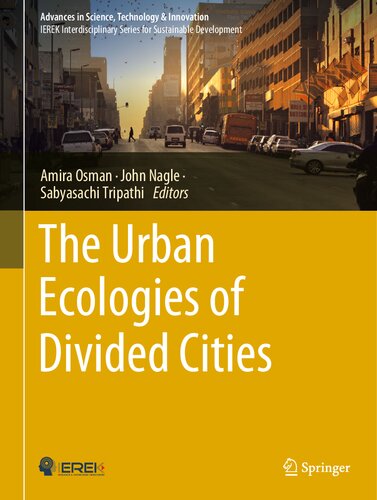

Most ebook files are in PDF format, so you can easily read them using various software such as Foxit Reader or directly on the Google Chrome browser.
Some ebook files are released by publishers in other formats such as .awz, .mobi, .epub, .fb2, etc. You may need to install specific software to read these formats on mobile/PC, such as Calibre.
Please read the tutorial at this link: https://ebookbell.com/faq
We offer FREE conversion to the popular formats you request; however, this may take some time. Therefore, right after payment, please email us, and we will try to provide the service as quickly as possible.
For some exceptional file formats or broken links (if any), please refrain from opening any disputes. Instead, email us first, and we will try to assist within a maximum of 6 hours.
EbookBell Team

5.0
100 reviewsThe book discusses how division affect the fabric of cities, and people’s sense of identity and agency, and are reflected in physical features, architecture, and urban planning. The question of divided cities represents a complex and multistranded urban Ecology―at once both social and spatial; it cannot be limited to a single science or discipline, such as social or spatial fields. This suggests integrated and cross- disciplinary understandings, as well as integrated or parallel approaches and solutions. Urban ecologies of division manifest in multiple forms. One of their most palpable expressions is conflict, with parallels around the world, and often with correlations in the spatial fabric. Violence in such contexts is often a surface expression of deeper socio-economic or ideological differences. Whether as a result of intervention by authority or by dissent between groups, a divided city inevitably becomes a place of conflict in various forms and intensity, eroding the joy of living and sense of collective belonging to the detriment of all. In effect, it erodes the collective advantage of being part of a more unified society.
A city exists in collections of social structures which mutually form a society. A divided city implies divided social structures and, in consequence, a divided society. The papers compiled in this book present many case studies of divided cities, discussing the different causes of divisions and their effects on societies. Some of the causes can be linked to conflicts, wars, colonialism, or legislative political systems.
In response to the serious challenges resulting from these divisions, the book aims to provide opportunities for new approaches and possibilities for new interventions and solutions, making it significant to urban planners, architects, and policymakers.